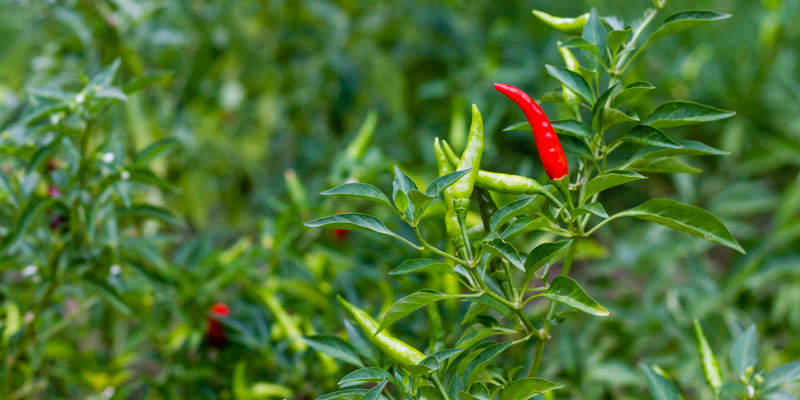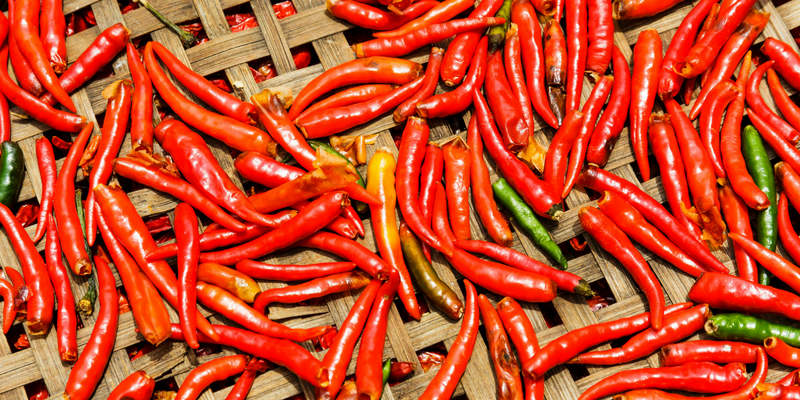There comes a time in many chilli enthusiasts' lives when they decide to grow their own peppers rather than rely on the varieties available in the stores. Often, this choice is accompanied by a desire to grow the hottest, most powerful chillies possible. If this sounds like you, here are some tips to help you toward an ultimately fiery harvest.
Choice of Variety
There are many different varieties of chilli, with heat ratings ranging from the ultra-mild to the nuclear. Obviously, your choice of chilli variety will play the biggest role in determining the potential for strength, but growing conditions will play a large part too.
Also be aware that, as a rule, hotter varieties will be harder to germinate and slower to grow, and they will need more warmth, sunlight, and a longer season for successful fruiting.
Planting Situation
Chillies are originally tropical plants, and require a sunny position with plenty of warmth to thrive and produce fiery fruit. Although it's entirely possible to grow the plants in a cooler climate, the more closely you can replicate their native conditions, the better. A glasshouse is ideal, although any sunny and sheltered spot can be pressed into service.
Soil Type
Chill peppers prefer a soil pH of between 6.5 and 7. If you're planting directly into the ground, then use a soil pH tester and add lime or acidic materials to adjust as necessary. However, planting into containers gives you much finer control over the type of soil you use; simply buy one of the widely available composts that's formulated for tomatoes.
Feeding
When it comes to feeding your plants, use a dedicated chilli pepper feed, tomato fertilizer, or a seaweed-based product. General-purpose feeds high in nitrogen can encourage leaf growth at the expense of fruits -- and heat -- so use one that's rich in potassium and phosphorus instead. Sulfur can help too, especially in slightly alkaline soils.
However, whichever feed you choose, don't overuse it or you can damage your plants. Too high a level of nutrients in the soil can send the plants into shock, slowing their growth, preventing the production of flowers, and even causing leaf loss. Follow the feed's instructions carefully so as not to make too strong a solution, and use a light hand when applying, especially in containers where unabsorbed nutrients can quickly build up to harmful levels.
Watering
Don't let your plants dry out completely, but at the same time don't over-water them. Keep the soil moist as far as possible, but err on the side of dryness rather than waterlogging. Chilli plants which are slightly under water stress will put more effort into producing fruit than foliage, and the resulting peppers will be much hotter.
Pinching Out
The usual advice for growing fruit, herbs, and vegetables is to pinch out the plant tips occasionally to encourage bushier growth. However, for maximum chilli heat, you want a large root system and not too many leaves, so that the plant puts most of its efforts into just a few fruit. This means that while pinching out your chilli plants may increase the yield, the heat will be reduced.
Harvesting
The longer you can leave the peppers to ripen on the plant, the hotter they will get. If your plant is particularly productive, consider picking half the fruits while they're immature, then removing any new flowers that appear, so that the remaining peppers can be the focus of the plant's ripening activity.
If all goes well, you'll achieve a decent crop with a good heat level. However, chillies can be fickle plants, and you may have to experiment with varieties and growing conditions to find the ideal combination for your own location and climate. But be warned: this could turn into a lifelong quest for the perfectly hot and fiery pepper!







